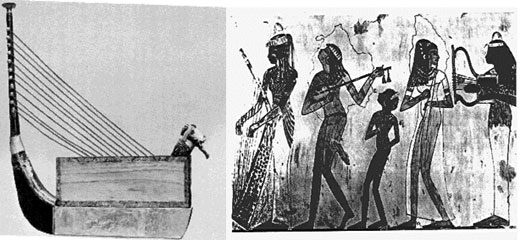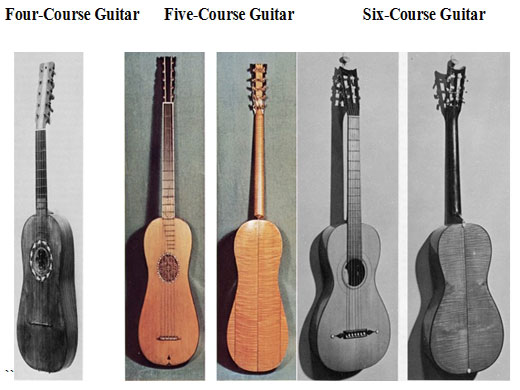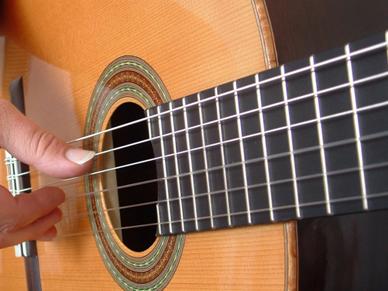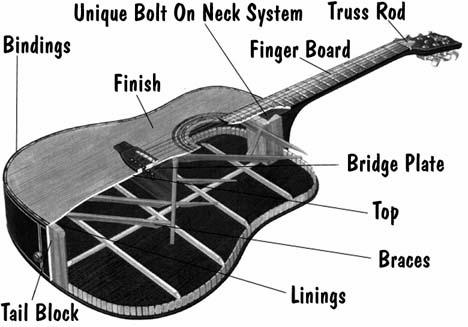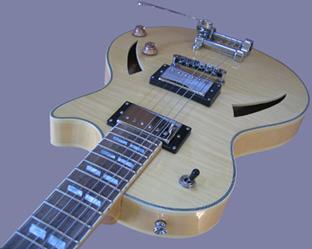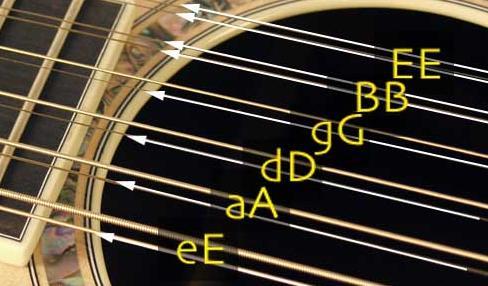History and Types of Electric Guitars
History of Guitars
Guitars have been in existence for thousands of years and can be traced back to nearly 4000 years back. They are noble in quality and their ancestry has many theories. There was a far fetched notion which emphasized that the guitar was an evolution of the ancient lute or some suggest that it was related to the ancient kithara of the Greek. In the 1960s Dr Michael Kasha underwent some serious research and proved them to be totally without solid evidence.
The earliest forefathers of the stringed instruments according to the archaeologists are the tanburs and the bowl harps. Different types of harps belonging to the Babylonian, Egyptian and the ancient Sumerian are found to have their resting places in many of the world museums. The period of 2500-2000 BC found to have acquired an ornately gold decorated 11-stringed instrument from the tomb of the Great Queen Shub-Ad.
The bowl harp and the tanburs have found to have their proof of existence in the wall paintings of the Egyption tombs. Tortoise shells were used and calabashes acted as resonators. A bent neck with silk or gut strings were used for bowl harps and tanburs on the other hand was a stringed instrument with a long neck. The neck was longer and indicates as the development of the bowl harp where the string had more flexibility.
One of the oldest stringed instruments which could be supposed to be the ancestor of modern guitar is still preserved at the Archaeological Museum in Cairo. Around 3500 years ago, this tanbur which belonged to an Egyption musician and singer Har-Mose was buried along with his favourite instrument. He was an assistant to Sen-Mut who was the architect to the Queen Hatshepsut who reigned during the period of 1503 BC.
WHAT IS A GUITAR
A Guitar can be distinguished from the other stringed family members by its long, fretted neck, flat back with curved-in sides and flat wooden soundboard with an equally flat back. Turkey has a stone carving at a place called Alaca Huyuk which represents all the essential features of a 3300 years backdated guitar.
Guitar has its name derived from the Sanskrit Language in which “tar” denotes “string”. Sanskrit is the ancient language from which many Central Asian and North Indian languages evolved. Even to this date, many of the folk musical instruments remain unchanged in its form and usage. Many instruments have their name with an ending “tar” with an added prefix which indicated the number of strings in it. Dotar is a two-stringed Turkistan instrument, setar is a 3 stringed Persian instrument, chartar is also a four-stringed one and the Panchtar which has five strings to it. Quiterra is a Spanish guitar, qithara in Arabic and Chitarra in Italian.
PROGRESS TO MODERN GUITARS
Modern guitars have found to progress from four strings to five and six strings in course of time by various musicians and makers. It is perfect that guitars have found their way to Europe from Egypt and Mesopotamia but the modern guitar has been the gift to the music world from Europe.
The Renaissance period saw the extreme use of four-stringed guitars to the maxim. The early 16 th century saw Spain to have come up with special music for this type of instrument. During the same period Italy came up with a five course instrument and paved way for the tuning of the modern guitars at A, D, G, B, E as standards like the modern guitars top five strings. The 8 frets which were in common to the lute were upgraded to 12 and more. The Italians seemed to possess the drive and energy which carried the five-course to six-course guitars in the late 17 th century.
Modern Classical Guitars of today took its form and shape in the 19 th century and a Spaniard Antonio Torres was the initiator. He made some significant changes to the body size, the entire proportion and also introduced the top bracing or the revolutionary “fan”. These dramatic changes had a fabulous effect in the tone and volume of the music and the instruments total projection. This pattern remains totally unchallenged to this very day and has laid down the basics in the making of modern day guitars.
Torres fan-braced guitars had a sibling from the German immigrants in USA at about the same time. A Christian Fredrich Martin came up with guitars which had tops of X-braces. The year 1900 saw usage of steel strings widely as it laid up louder guitars. But it was not ideal for the Torres guitars as it produced too much tension to their fan-braced tops.
Finally Orville Gibson introduced archtop guitars and they had oval shaped sound holes in them. He restructured the guitar so that they had tops which freely vibrated and had good volume and depth of sound. Designer Lloyd Loar contributed to the recent form of floating bridge with f-holes and the cello type tailpiece.
In 1920s electric guitar had its inception when pickups were introduced to the jazz and Hawaiian guitars. With the invention of adding an amplifier to the electric guitar for better results, they took totally took over the stage of guitar world from then on.
TYPES OF GUITARS
Guitars have a long history of existence as well as a wide range of designs to choose from. The very many types of guitars are named basically on its structure and design. Broadly classified there are three main types of guitars, the classical, acoustic and electric guitars. There are the less popular semi acoustic, 12 string, flamenco, double headed, bass guitars too.
CLASSICAL GUITAR
This modern classical guitar type is otherwise called Spanish Guitar as it originates from Spain. It is one of the widely used guitars all over. The wooden box is large and hollow with sound holes. The fret board is quite wider with a long neck and usually nylon strings are used in a classical guitar. The headstock or the tuning head is totally facilitated for additional fine tuning. A classical guitar is a six-stringed guitar which is ideal for a solo performance. Its strings are equally nylon and made of nylon fibre.
ACOUSTIC GUITAR
The classique acoustic guitar relies on acoustic methods to project forward the music that is received from picking its strings. This is done by a soundboard and a sound box which resonates. The body of an acoustic guitar is very much hollow for this very purpose. An acoustic guitar looks similar to a classical guitar apart from the fret board which is much narrower. The strings are made of steel and have a small neck. These guitars do not require an amplifier like that of a classical guitar to produce sound and because of its metal strings a plectrum is required to play it. To play Rock, Country and Jazz acoustic guitars with metal strings are excellent.
Acoustic guitars makes good supporting instrument in a larger performance and can provide with a solo entertainment too. When nylon strings are used it produces a soft and classical tone. The body of the acoustic guitar is made of many pieces of wood and the common types are rosewood, mahogany and maple.
Light weight acoustic guitar and a heavier one are also available to the individual preferences. The standard scale length of an acoustic guitar lies between 24½” – 25½”. There are various other sizes from beginners to a large jumbo-sized acoustic guitar. A microphone or a specially designed pickup can be used to enhance the sound produced by an acoustic guitar.
ELECTRIC GUITAR
The very name electric guitar suggests that it requires power and an amplifier to advance its sound. An electric guitar use electromagnetic pickups to convert the vibrations of the strings to electric signals which are then amplified. These guitars are usually solid body guitars and are quite heavy to handle. They are highly used to play heavy music like Rock and Roll, Pop and the Metal. This type of guitars makes use of accessories like effects pedals, amplifiers and leads. They produce a variety of music right from classical to the rocking performance from a Stratocaster. The timbre of the music from an electric guitar is totally different from that of an acoustic guitar. As the body design of an electric guitar does not have a deep impact in the resonance of the sound produced, they come in a variety of contours and shapes for comfortable playing.
Also electric guitars come under three body types of solid, hollow and semi-hollow categories. They have stoprail bridge for stable tuning and also uses tremolo bridge which is perfect for playing Metal. Standard scale length vary from 24½” – 25½” like that of an acoustic guitar. The three types of neck joint used in an electric guitar are set in, bolt on and neck through body with a standard set of 22 frets to it. The neck profile is termed according to the design as oval, C, U or V types. Even the pickups used are either a single coil pickup or a humbucker.
SEMI ACOUSTIC GUITAR
A special type of electric guitar which has both the provision of a sound box and a few electric pickups is branded as a semi-acoustic or hollow-bodied guitar. The sound box is quite large and provides enough sound for a solo play for a small audience without an amplifier. This is a real compromise and balance between an acoustic and an electric guitar. The very subtle nuances that could be perceived in an acoustic guitar can be picked up in a semi acoustic guitar too.
BASS GUITAR
The bass guitar is noted for its thick strings and a perfect long scale length which are able to emulate a string of notes that pitch lower than the normal octave from a standard guitar. It normally appears to have a long neck than that of standard guitars. This helps a lot to maintain a bass line in a band. The bass guitar usually comes down with a standard four strings even if some makes have five strings. These four strings correspond to the lower four notes of an ordinary guitar. Both the acoustic bass and electric bass type of guitars are available in the market. Fretless boards sound closer to that of an acoustic guitar while fretted boards reach out to resemble an electric guitar.
The 4 basic strings are tuned to the base notes of G, D, A and E tones. Checking out the tuning pegs, tone and volume controls to assure smoothness is highly recommended. A straight neck is apt for a bass guitar than a bent or pitted one. The bass guitar has an extremely wide scale length of 34″ and is highly comfortable while playing. Both the single coil and humbucker pickups are used which is sort of a personal preference by the guitarist.
TWELVE-STRING GUITAR
A guitar which has six pair of strings and is set along with the original thicker string is a perfect example for a twelve-string guitar. The thinner string in the pair is tuned to an octave higher. As they lay in pairs, it is not much difficult to play. This is both acoustic and electric in type. The twelve-string guitar should not be mistaken for the double necked guitar which is a different genre. The sound produced is more bright and rich toned. When a band requires a loud strumming with an extra depth, the twelve-string guitar is the perfect choice. They acquire only metal strings and the fret board is on the extra long side. Playing this unique 12-string guitar requires great expertise and should already have mastered the original six strings perfectly.
OTHER TYPES OF GUITARS
Apart from the above discussed types of major guitars there are also other types like the arch-top guitar, the steel guitar which played horizontally either on the lap or in its stand, resonator guitars which have a large volume and is good to be heard above in a large gathering. The double neck guitar is two different types of guitars which share a common body. This saves the time for the guitarist to change the instrument during a recording.

